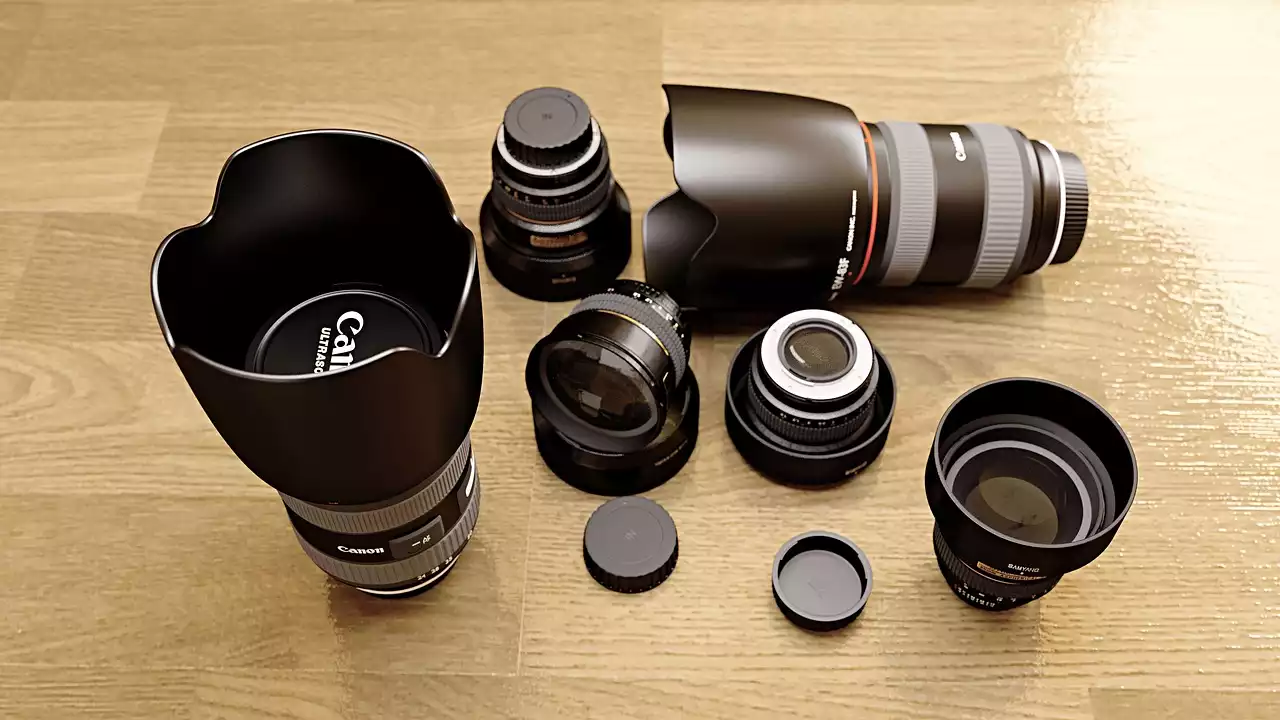History of camera lens innovation
There is a rich history of innovation that goes along with camera lenses, dating back to the 1940s. During this time, Zeiss and Canon were responsible for some of the most important lens innovations. Zeiss was responsible for inventing the first modern zoom lens, while Canon was responsible for introducing the first EF mount. This EF mount took the place of the older FD mount, which was used in Canon SLR cameras. These innovations helped to advance the art of photography and videography, transforming it from a tedious and stationary activity into a dynamic and exciting pursuit. These innovations were also key to ushering in the digital photography era as we know it today. Over time, new and even more advanced lens technologies have been developed, such as image stabilization, optical zoom, and autofocus. These advancements have made it possible for photographers and videographers to capture stunning imagery and videos, regardless of the conditions in which they’re shooting.
Types of camera lenses
There are many different types of camera lenses, each with its unique characteristics and uses. The most common types of camera lenses are zoom lenses, prime lenses, and specialty lenses. Zoom lenses are the most popular type of camera lens, as they can be used for a variety of situations, such as portraiture, nature photography, and videography. Prime lenses are another common type of camera lens, although they have a single focal length with no zoom capabilities. Specialty lenses are lenses that have unique characteristics, such as macro lenses, fisheye lenses, and tilt-shift lenses. Zoom lenses are the most common type of camera lens. Zoom lenses are versatile and can be used in a variety of situations. A zoom lens has a single focal length that can be “zoomed in” or “zoomed out” to change the focal length. Prime lenses are another common type of camera lens. Prime lenses have a single focal length and no zoom capabilities. These lenses are often used for specific types of photography, such as portraiture, because they have a large depth of field, allowing for a blurry background. Specialty lenses are lenses that have unique characteristics. Some examples of specialty lenses are macro lenses, fisheye lenses, and tilt-shift lenses.
Camera lens technology
Camera lens technology has come a long way since its early days. Many early lenses were made of glass and were very fragile. Although camera lenses have come a long way and no longer use glass, they still have their fair share of challenges. One challenge that is common among camera lenses is chromatic aberration. Chromatic aberration typically occurs when a camera lens is unable to focus all colors onto the same focal plane. As a result, colors will appear out of focus when an image is taken. This can be corrected by using image editing software. Another challenge that camera lenses face is vignetting. Vignetting is typically seen in wide-angle lenses and occurs when the edge of the image is darker than the center. This can be corrected by adding software in post-production. Another challenge that camera lenses face is vignetting. Vignetting is typically seen in wide-angle lenses and occurs when the edge of the image is darker than the center. This can be corrected by adding software in post-production.
Camera lens technology advances
Camera lens technology has come a long way since its early days. Many early lenses were made of glass and were very fragile. Although camera lenses have come a long way and no longer use glass, they still have their fair share of challenges. One challenge that is common among camera lenses is chromatic aberration. Chromatic aberration typically occurs when a camera lens is unable to focus all colors onto the same focal plane. Another challenge that camera lenses face is vignetting. Vignetting is typically seen in wide-angle lenses and occurs when the edge of the image is darker than the center. These are just two examples of how camera lens technology continues to advance. These challenges can be corrected by using image editing software. Another challenge that camera lenses face is vignetting. Vignetting is typically seen in wide-angle lenses and occurs when the edge of the image is darker than the center. This can be corrected by adding software in post-production.
Camera lens quality standards
Many different standards can be applied to camera lenses, such as aperture quality, image quality, and zoom lens quality. The aperture of a camera lens is the opening that controls how much light enters the lens. The wider the aperture, the more light is allowed to pass through the lens. The aperture quality of a camera lens refers to how clean the aperture is. An aperture that is not clean will cause a hazy appearance in photos. Image quality refers to how clear an image appears. Zoom lens quality refers to how cleanly the image appears when zoomed in or out. A zoom lens that has poor quality will show a “jagged” appearance, where the image appears to have a sawtooth pattern.
Camera lens compatibility
Camera lenses must be compatible with the cameras they’re being used with to function correctly. Lens compatibility can be checked by reading the manufacturer’s information about the lens or by checking the camera’s compatibility chart. If a camera lens is not compatible with a camera, it will not be able to focus. This can be a major problem when trying to take photos or videos.











